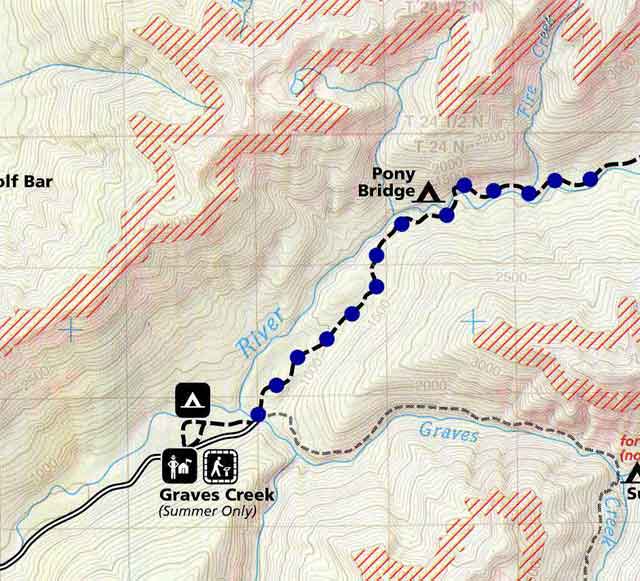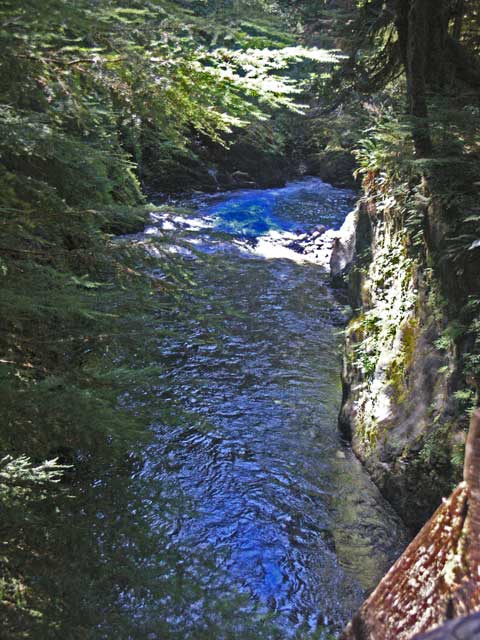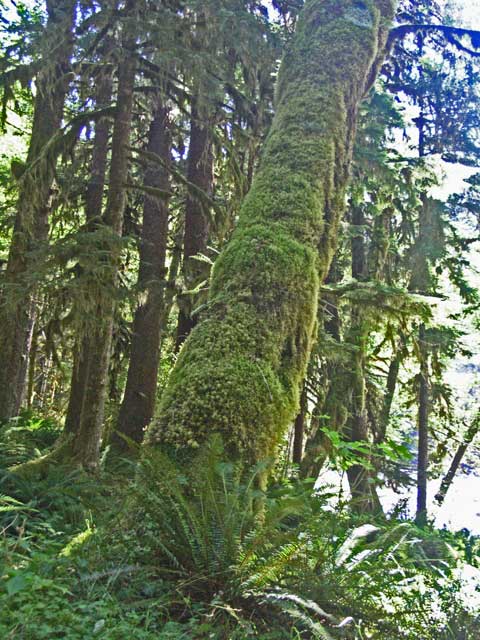
Not sure why I snapped this shot - I think this is blackberry.

We got up and got to breakfast about half an hour before the lodge restaurant opened. I used the time to catch up on this journal. The weather was foggy, but Maribeth predicted it would burn off. Indeed by the end of breakfast some sun was evident and the far shore of the lake was becoming visible as we returned to the room to get ready for the day’s walk.
Prior to our departure, we make our lunches from a spread Steve and Maribeth laid out from the back of the vans. Once packed up, we drove up the river valley – briefly – where we go off for a short (0.3 mile) jaunt to the world’s largest Sitka spruce. The group posed for a group photo, although I didn’t get a shot of the group. We hike back to the vans and headed up the road on the south side of the Quinault River.
… This is a Sitka Spruce, one of the Quinault Valley’s six champion trees. The trees in the Quinault Rainforest are well watered with an average rainfall of 12 feet a year. There is a Spruce in Oregon that has been named a co-champion.

At the end of this road was the Graves Creek campground and the trailhead. We crossed a well-built bridge apparently over Graves Creek and then a “log bridge” over a smaller stream. When I say “log bridge” it was literally a single log across the stream – the top surface had been cut down to make it flat (about 12 – 18” wide) and had been scored to improve footing. There was also a rail on one side. Steve did not use the bridge but went down to the water, then up the bank on the other side. I found out later that he put a watermelon in the stream to chill for our snack on our return.
The first leg of the trip, to a picnic area, was mostly uphill. The trail climbed the edges of steep valleys through the thick woods. On one slope there were two giants – one was a Douglas-fir , the other was apparently a western cedar. Jonathan and I as usual lagged behind the group taking photographs and otherwise taking our time. We were the last to reach the picnic tables and the group moved on soon after our arrival.
The next leg of the trail was narrower and mostly downhill to the Pony Bridge. The trails continued to cling to the sides of the steep wooded valleys. For being a rainforest, the trails were pretty much dry, except in places where various rills and rivulets ran down the trail before seeking a more rapid descent to the river below.
The Pony Bridge was a well-constructed span that crosses the Quinault River where it dives between two large rock structures some 30 feet or so below the bridge. The water dashing through this stretch had the characteristic blue color of water coming from glaciers.
Practically all the walk was in the shade with only occasional ventures in to the “light gaps” where tree falls allow light to reach the floor of the forest and the vegetation changes accordingly. This light/dark plays havoc with the digital camera either over or under exposing the photos.
The trail continued in an up-and-down fashion hugging the sides of the ridges, but generally descended to the valley floor. The forest here seemed a bit lighter and younger, probably due to the river changing course over time or floods taking out old stands of trees while simultaneously creating new ground for plants to grow upon.
We stopped for lunch beside the river. The area under the trees was a bit “buggy” so most of us ate on the riverbank where the breeze kept the bugs under control. I took off my boots and waded in the river a little bit but the water is extremely cold, and my feet began to ache from the cold in less than a minute.
While we were there, one of our fellow walkers, Ray, pulled out his fly fishing rod and laced the water of the Quinault River. He caught a couple of steelhead trout while we ate lunch, releasing them as he caught them. I had never seen a fly fisherman in action and Jonathan commented on the beauty of the casting.
While at lunch, a park ranger (complete with backpack) stopped by to check up on us. Steve and Maribeth spent most of the time chatting with the ranger who was curious about the kind of fish Ray was catching rather than checking on permits (which where in proper order).

Heading up the trail, the bridge crosses Graves Creek, just at the end of the road leading up the valley.

The basalt canyon that is spanned by the Pony Bridge. The blue of the water is a sky reflection and glacier water.

Another example of the growth upon growth upon growth that characterizes the temperate (or any) rain forest.
After lunch we retraced our steps, with the two of us taking our accustomed place in the rear. As is my habit, I stowed my camera on the return trip, although I did dig it out a couple of times for a shot. Jonathan had a couple of places he wanted to get photos on the way back – a ravine with fallen, moss covered logs spanning the narrow cut, and the two large tree mentioned before.
The exertion was notable climbing the trail from the Pony Bridge to the picnic tables, but the descent from the picnic tables back to the trailhead was quite manageable.
By the time Jonathan and I returned to the vans, Steve had retrieved the watermelon from the stream and was cutting it up for everyone as we were the last walkers back to the vans.
We drove back to the lodge, dropping Ray off at a bridge where he could get down to the river for another hour or so of fly fishing. When we returned to the lodge at about 4:45pm, we discovered that the electricity was out. Not sure of how the water was heated, we immediately took our showers with no apparent loss in temperature. We discovered at dinner that some of our fellow walkers had ended up with lukewarm to cold showers.
Dinner went on despite the lack of electricity – the staff reported that the cooking was done by gas and that the lodge was used to coping with electrical outages during the winter when the wind and rain could play havoc on the electrical grid. The wait staff apologized that the food wasn’t warmer (I suppose they were using electrical radiant warmers) and there was no tea or coffee.
After dinner, Harvest Moon (a Native American Quinault basket weaver and storyteller) gave a talk on local native culture in the darkened activity room by candlelight. She told a charming (and faintly naughty) story about a canine potlatch (gathering). Afterwards, Steve handed out candles for the hotel rooms. DeDe had a flashlight and guided us back through the darkness before leaving us to find our way up the last ramp by candlelight to our room.